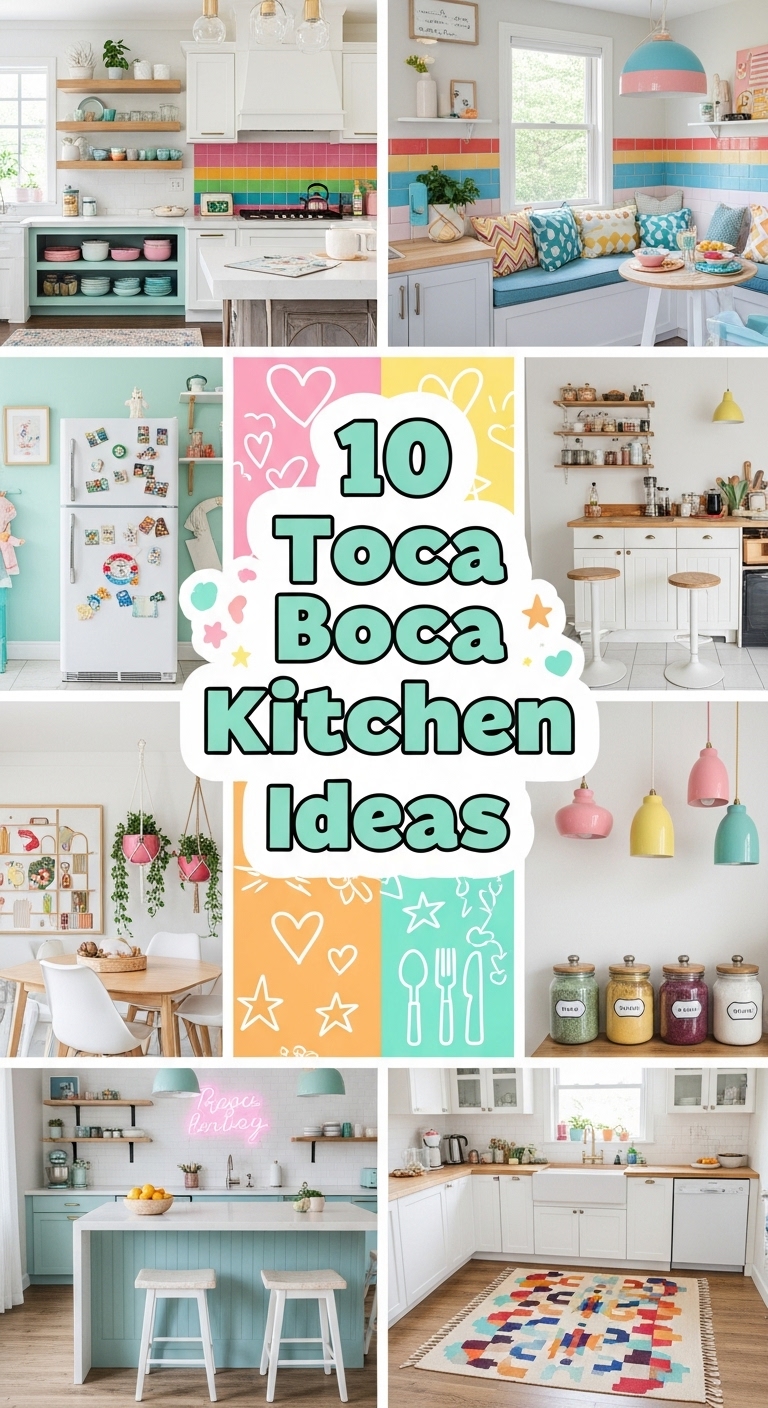
10 Toca Boca Kitchen Ideas
Toca Boca is one of the most popular interactive app series for kids, and its kitchen-themed games, especially Toca Kitchen and Toca Kitchen 2, have captivated millions of players around the world. These games encourage creativity, imagination, and role-play by letting players experiment with food, cooking methods, and quirky characters. Unlike traditional cooking games with strict rules, Toca Boca gives children the freedom to explore without limitations, which is part of its enduring charm.
For parents, educators, and young players, the kitchen games offer much more than entertainment. They provide opportunities to learn about food, flavors, and basic cooking concepts while having fun. In this post, we will explore 10 Toca Boca kitchen ideas that can make gameplay more enjoyable, engaging, and imaginative. These ideas include tips for using the features of the game, creative ways to experiment, and inspiration for extending play beyond the screen.
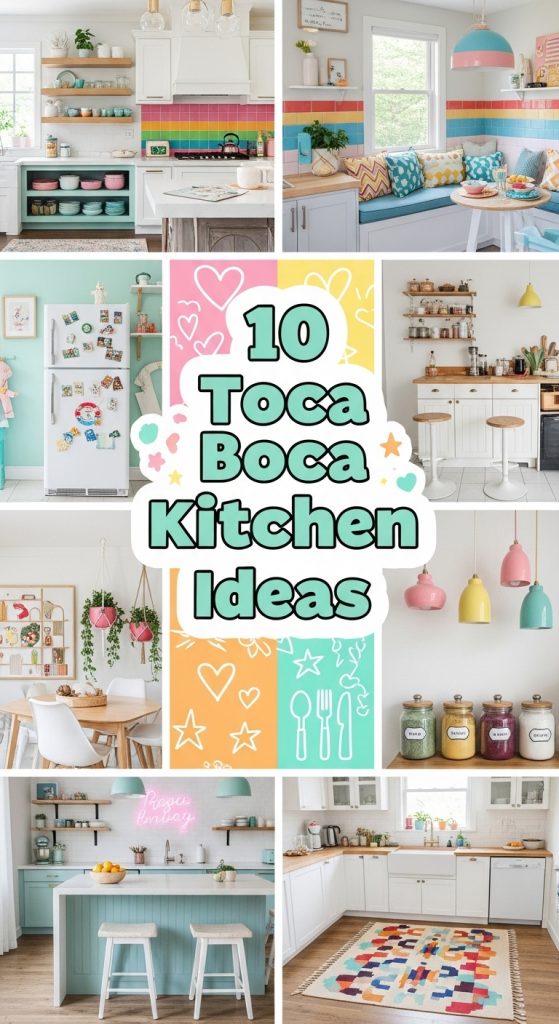
1. Experiment with Strange Ingredient Combinations
One of the most entertaining aspects of Toca Kitchen is the ability to mix unlikely ingredients. Players can blend fruits with fish, serve raw onions with ice cream, or cook pasta with strawberries. The reactions of the characters to these unusual meals are often hilarious.
Encouraging children to experiment this way helps spark curiosity about food and flavors. It also reinforces the idea that experimentation is part of learning. In real life, kids can talk about why certain combinations work or do not work, helping them understand taste profiles in a playful way.
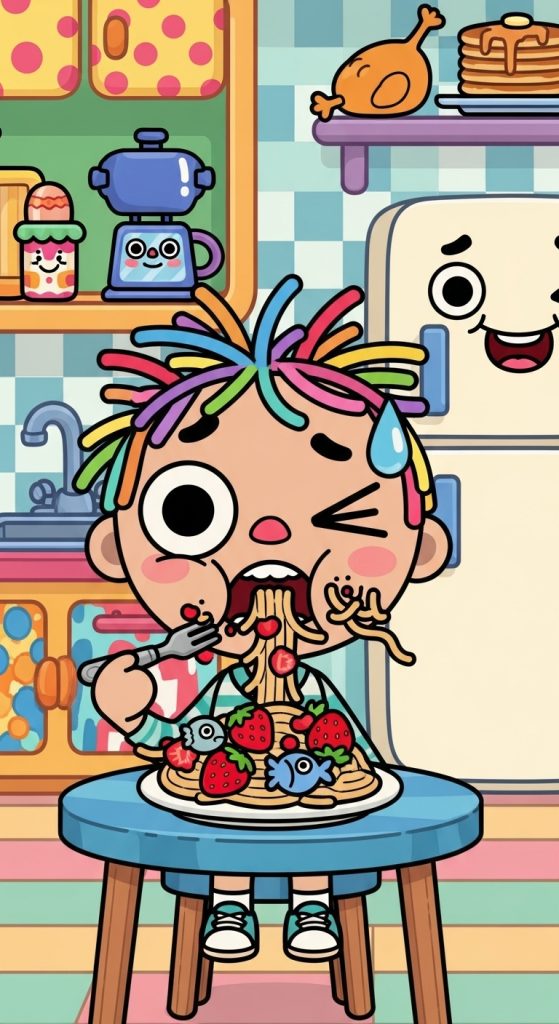
2. Create Theme Meals
Players can design theme-based meals within the game. For example, they can prepare an all-green dinner using cucumbers, broccoli, and green apples. Or they can try a breakfast theme with eggs, toast, and juice. Creating themes adds structure to the game and encourages problem-solving as kids decide which ingredients fit the idea.
Parents can extend this concept into real life by letting children help prepare a themed snack at home. This bridges digital play with hands-on experiences in the kitchen.
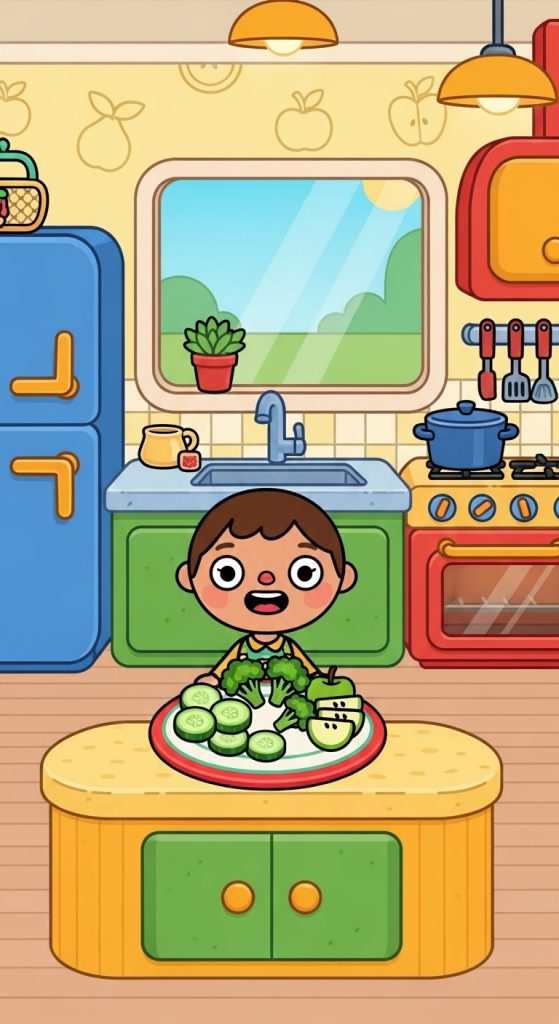
3. Master Different Cooking Techniques
Toca Kitchen allows players to experiment with boiling, frying, blending, microwaving, and cutting. Each technique produces a different result and character reaction. Children can explore how raw foods change when they are cooked and notice differences in color, texture, and presentation.
By focusing on mastering each technique, players gain an early appreciation of cooking as a process. For instance, frying fish until it turns golden or boiling pasta until it softens teaches cause-and-effect relationships in an interactive way.
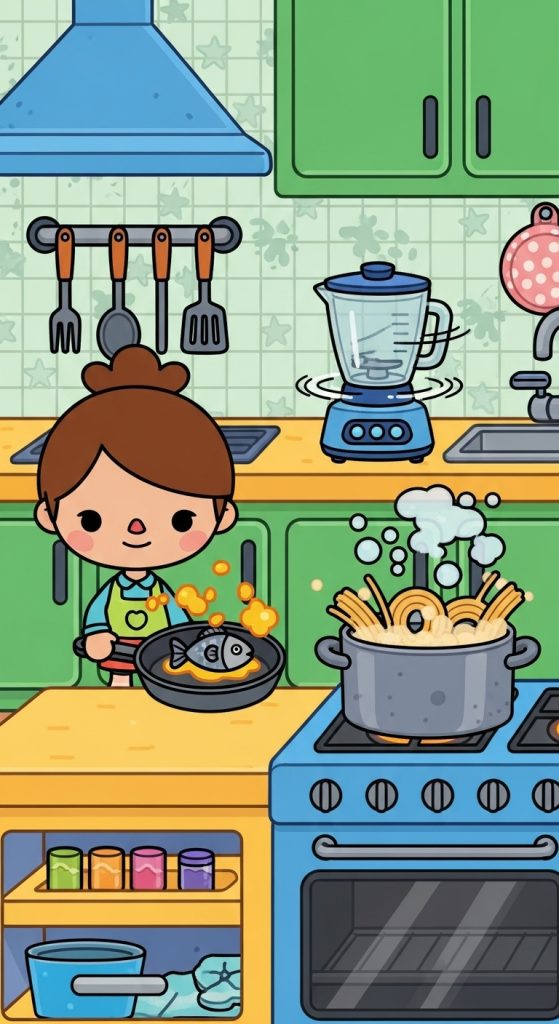
4. Recreate Real-Life Recipes in the Game
Another engaging idea is to use the Toca Kitchen app as inspiration to recreate family recipes. A child can choose to cook spaghetti in the game, then later help prepare spaghetti in real life under adult supervision.
This approach connects digital play with hands-on cooking, helping kids feel a sense of accomplishment. It also encourages discussions about nutrition, ingredients, and cultural food traditions. Recreating recipes reinforces memory, sequencing, and following steps, all of which are valuable life skills.
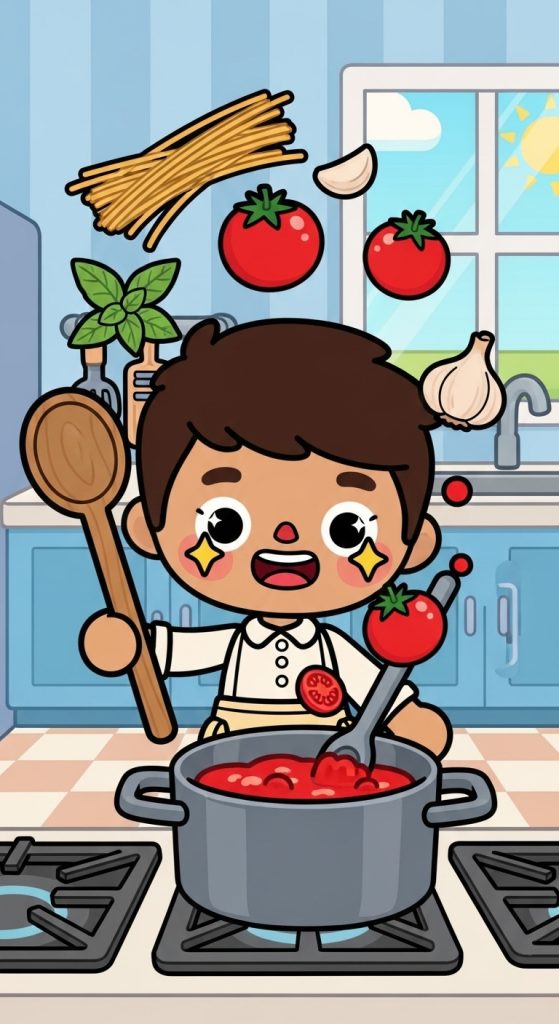
5. Invent a Fantasy Menu
Because the game has no strict rules, players can invent fantasy menus that might never exist in real life. For example, they can serve a rainbow pizza with every ingredient available, create a dessert platter with meat and candy, or prepare a smoothie made entirely of vegetables.
This type of imaginative play supports creativity and storytelling. Children can even write out their fantasy menu, give dishes funny names, and pretend to run their own restaurant. This turns Toca Kitchen into a platform for role-playing games that go beyond simple cooking.
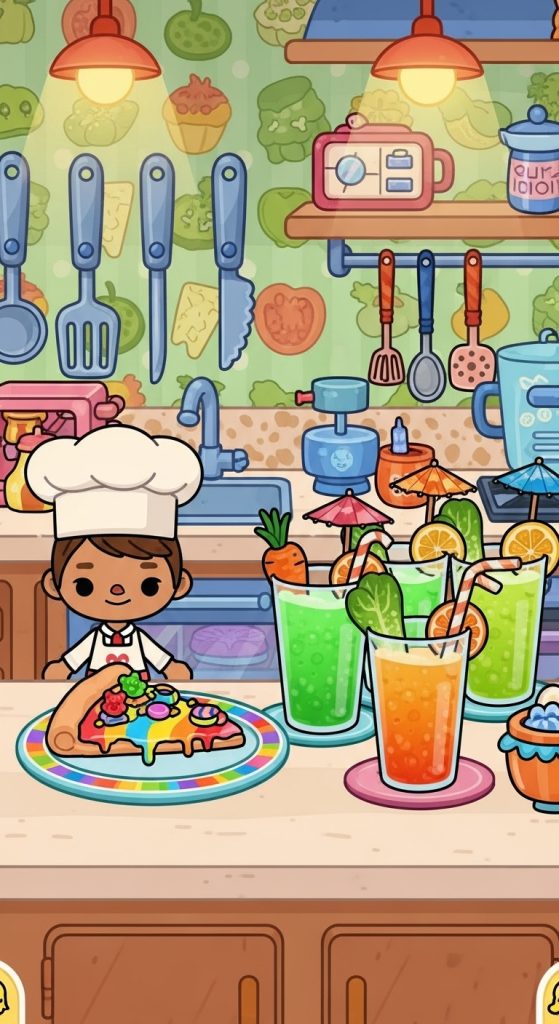
6. Focus on Character Reactions
One of the most delightful features of the game is watching characters respond to the food they are served. Some characters love spicy peppers while others dislike certain flavors. Paying close attention to their facial expressions and sounds can help kids learn about preferences and empathy.
Parents and teachers can encourage children to describe what the character might be feeling and why. This adds an emotional learning layer to the gameplay, where children consider likes and dislikes in a playful context.

7. Set Cooking Challenges
To make the game even more exciting, children can set challenges for themselves or play with friends. For example, they can challenge each other to make a three-ingredient meal, prepare only vegetarian dishes, or cook meals without using the blender.
Challenges add variety and structure to the game, turning it into a form of competition or teamwork. This keeps the gameplay fresh and encourages children to think outside the box.
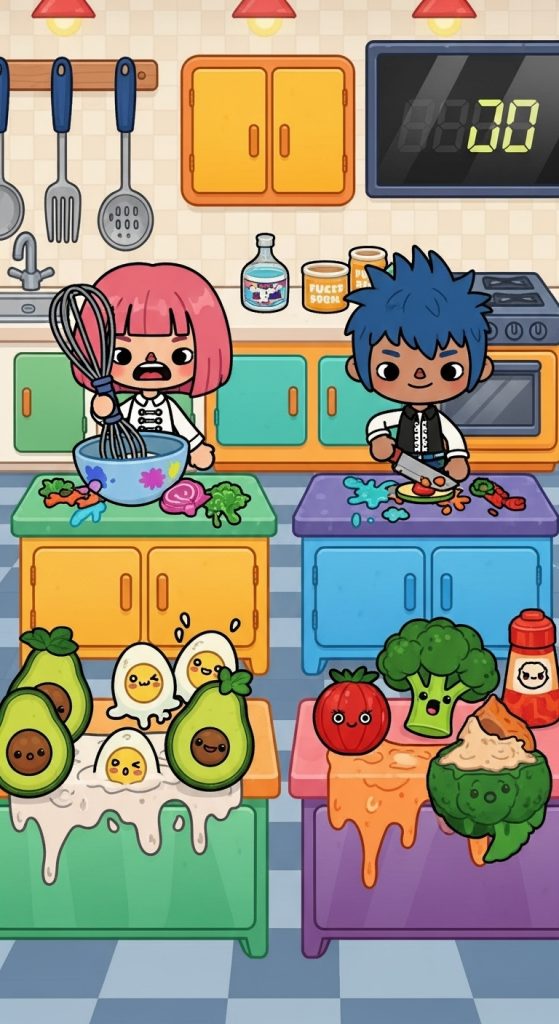
8. Build a Story Around the Kitchen
Toca Kitchen can become the stage for larger storytelling adventures. Children can imagine that their character is running a restaurant, hosting a party, or preparing food for a family gathering. They can use the meals they prepare in the game as part of a larger narrative.
Storytelling enhances imagination and communication skills. Parents can join in by asking questions like Who is visiting your restaurant today or What special dish are you serving at the party This transforms the game into a collaborative storytelling experience.
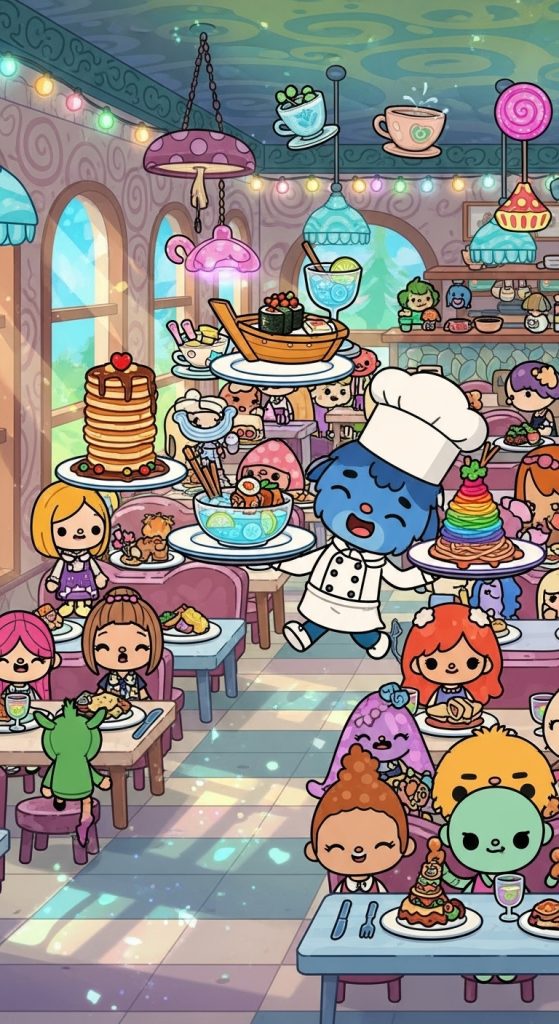
9. Use the Game for Learning About Nutrition
While Toca Kitchen is primarily for fun, it can also be a learning tool. Parents and teachers can use the foods in the game to talk about nutrition. For example, they can explain why fruits and vegetables are important or why too much candy is not healthy.
Kids can explore making balanced plates in the game, including protein, vegetables, and grains. They can compare what happens when they serve only sweets versus when they create balanced meals. This can start positive conversations about healthy eating in a playful and non-judgmental way.
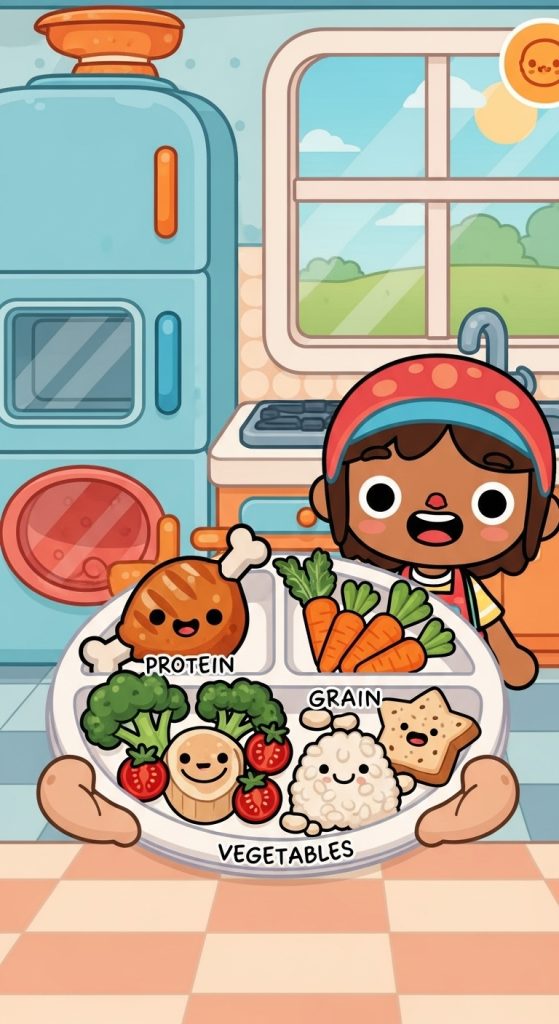
10. Extend Play Beyond the Screen
Finally, one of the best ways to use Toca Kitchen is as a springboard for real-life play. Children can draw pictures of the meals they create, write menus, or help prepare simple snacks inspired by their digital experiments. Parents can even set up a pretend restaurant at home, where kids serve their creations to family members.
Extending play beyond the screen keeps the imaginative momentum alive and bridges digital learning with real-world experiences. It also ensures that children gain practical skills while enjoying their time in the app.
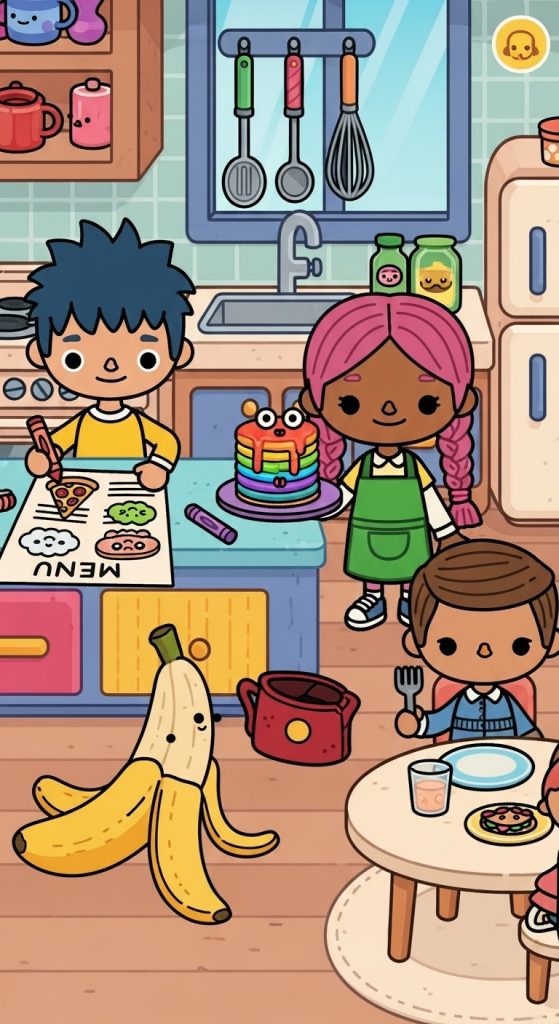
About Me

Chesung Subba
Author/Writer
Hello, I'm Chesung Subba, a passionate writer who loves sharing ideas, stories, and experiences to inspire, inform, and connect with readers through meaningful content.
Follow Me
Connect with me and be part of my social media community.
Leave a Reply